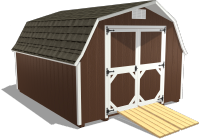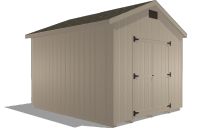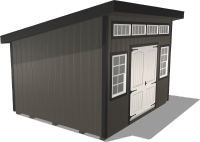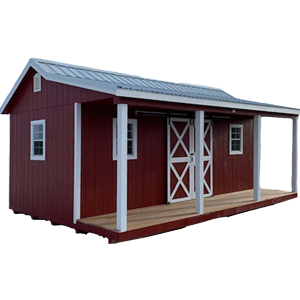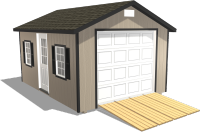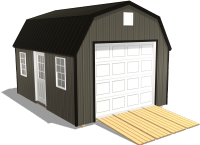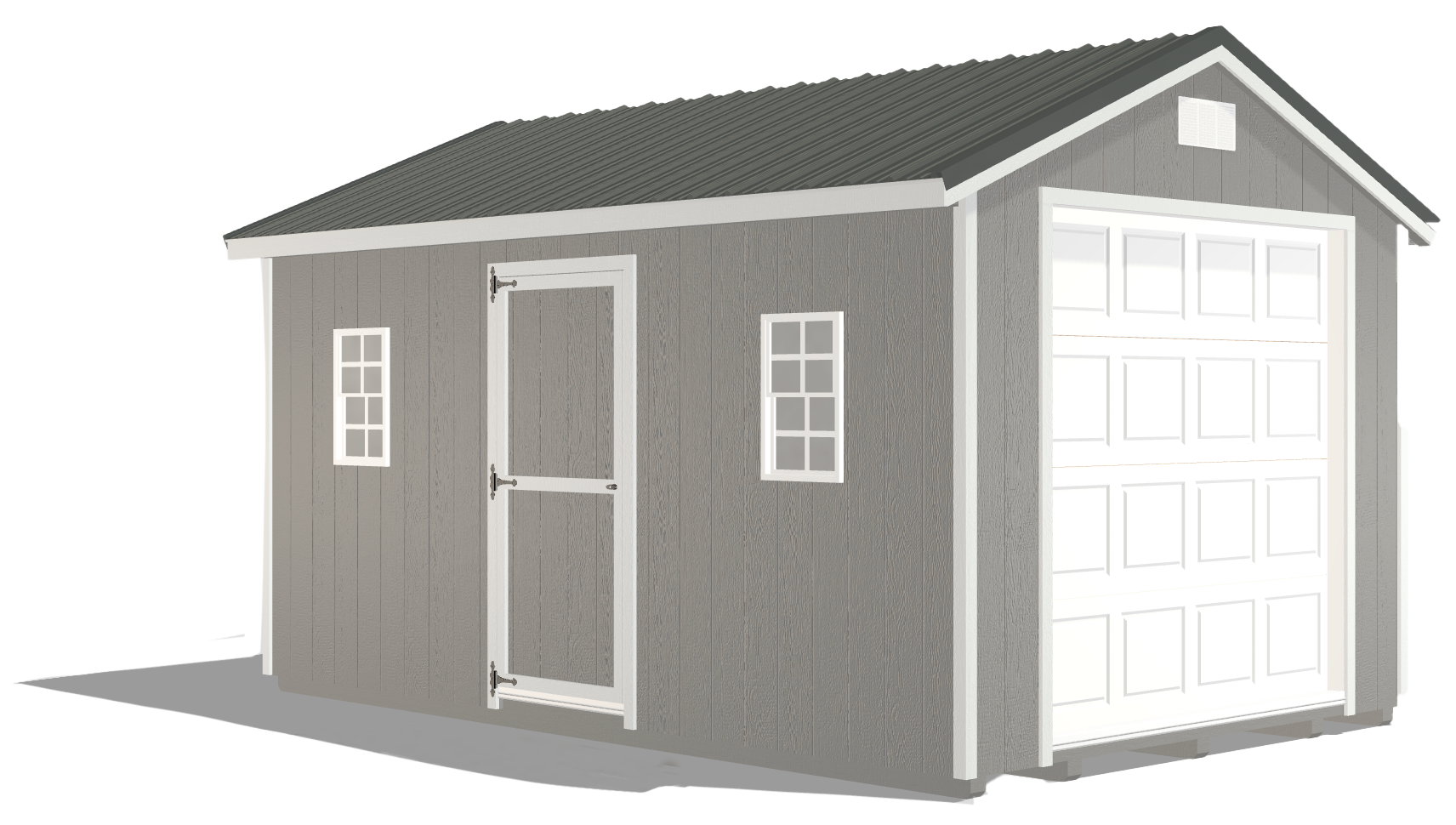How to Create the Perfect Environment: Greenhouse Ventilation
by Dakota Storage Buildings, on July 17, 2024

Creating an optimal environment for plant growth within a greenhouse is a rewarding journey that becomes easier with the right knowledge of ventilation systems. Understanding how to manage airflow, temperature, and humidity effectively is crucial for maintaining healthy and productive plants. We want to simplify greenhouse ventilation by providing comprehensive information to help you enhance plant growth, optimize resource utilization, and achieve sustainable gardening practices.
Understanding How Ventilation Enhances Greenhouse Efficiency
Do greenhouses need ventilation? Yes! Ventilation is vital in maintaining the right conditions for plant growth. Implementing effective ventilation solutions in your greenhouse design creates an environment where plants can thrive. Proper ventilation regulates temperature and humidity and prevents the buildup of pests and diseases, ensuring healthier and more productive plants. Without adequate ventilation, greenhouses can become too hot or too humid, leading to plant stress and a higher risk of diseases.
Proper airflow also helps to disperse excess moisture, reducing the likelihood of fungal infections and other moisture-related problems. A well-ventilated greenhouse mimics natural outdoor conditions, allowing for a more controlled and consistent growing environment. This balance is critical for fostering optimal plant growth and maximizing your harvest. Understanding the various ventilation techniques and their specific benefits can help you choose a more efficient and effective greenhouse system tailored to your unique needs.
Ventilation Methods for a Healthy Greenhouse

Revolutionize your greenhouse management with these ventilation techniques to ensure a healthy growing environment.
Natural Ventilation
For small greenhouse ventilation, keep doors, windows, vents, and louvers open. These should be strategically placed throughout the greenhouse design to allow the natural flow of air into and out of the structure. Wind movement and temperature differentials between the inside and outside of the greenhouse play a crucial role in this process. Properly positioned air vents for greenhouses can harness natural airflow, reducing the need for mechanical systems and lowering energy costs.
Roof Ventilation
Ridge vents or roof vents are placed along the highest point of the roof. They allow hot air to escape, providing better air circulation and temperature regulation. By releasing heat that accumulates at the top, roof vents prevent overheating and ensure a more consistent temperature throughout the greenhouse. This method is particularly effective in larger greenhouses where heat tends to build up quickly.
Ventilation Fans
Ventilation fans are a great tool for maintaining air circulation within the greenhouse, preventing stagnant air pockets that can lead to humidity issues and pest infestations. These fans effectively supplement natural ventilation, especially in larger or more complex greenhouse designs. By ensuring consistent airflow, ventilation fans help prevent disease and make sure all areas of the greenhouse receive adequate ventilation, promoting a healthier environment for plant growth.
Effective Ventilation Strategies for Maximum Plant Growth

Proper ventilation is key to maximizing your greenhouse yields by creating an ideal growing environment. Here’s how you can achieve this.
Maintaining Perfect Climate Conditions
Maintaining the right balance of temperature and humidity is crucial for healthy plant growth. Too much humidity can lead to mold and mildew, while too little can cause plants to dry out. Extreme temperatures can stress plants and reduce productivity. By using ventilation to regulate these factors, you can create a stable environment that supports optimal plant health and growth. Implementing automated systems like thermostats and hygrometers can help you monitor and adjust the conditions in your greenhouse more precisely, ensuring that plants receive the care they need. These systems can also alert you to any sudden changes, allowing you to take immediate action to protect your plants.
Enhancing Airflow for Improved Plant Health
Good airflow helps prevent diseases, promotes pollination, and increases overall plant productivity. Proper greenhouse ventilation ensures that fresh air circulates throughout the structure, reducing the risk of disease and providing plants with the carbon dioxide they need for photosynthesis. Enhanced airflow also helps maintain consistent temperatures and humidity levels, further supporting plant health. Installing fans or using natural ventilation techniques can enhance airflow, preventing the development of hot spots and stagnant air pockets. This consistent movement of air not only strengthens plant stems by mimicking natural wind conditions but also helps disperse pests and reduces the likelihood of fungal infections.
Sustainable Greenhouse Ventilation Techniques

Fostering sustainability in gardening through eco-friendly ventilation solutions can help reduce environmental impact and promote long-term viability. Sustainable practices not only benefit the environment but also enhance the efficiency and resilience of your greenhouse operations.
Energy-Efficient Ventilation Solutions
Energy-saving ventilation methods, such as passive ventilation systems and energy-efficient fans, can reduce the environmental impact of your greenhouse while maintaining optimal growing conditions. These techniques help lower energy consumption and costs, making your greenhouse more sustainable. Passive ventilation, which relies on natural airflow rather than mechanical systems, can significantly cut down on energy use. Investing in solar-powered fans or other renewable energy sources can help minimize your greenhouse’s carbon footprint, aligning your gardening practices with broader environmental goals.
Adapt Your Greenhouse for Climate Resilience
Strategic ventilation practices can help greenhouses adapt to changing climate conditions, ensuring long-term sustainability. By implementing flexible and resilient greenhouse ventilation systems, you can protect your plants from extreme weather events and fluctuating temperatures, making your greenhouse more robust and adaptable to future climate challenges. Advanced systems that can automatically adjust to external weather conditions provide a stable internal environment, safeguarding your crops against unpredictable weather patterns.
Start Transforming Your Gardening Experience Now
Now that you have a comprehensive understanding of small greenhouse ventilation, you can start creating the perfect environment for your plants. By implementing these techniques, you will enhance plant growth, optimize resource utilization, and promote sustainable agricultural practices. Ready to start your own greenhouse garden? Explore our range of stock greenhouses or configure a custom greenhouse and start transforming your gardening experience today. Investing in the right greenhouse design can provide you with a controlled environment that supports year-round cultivation and increases your overall gardening success.





